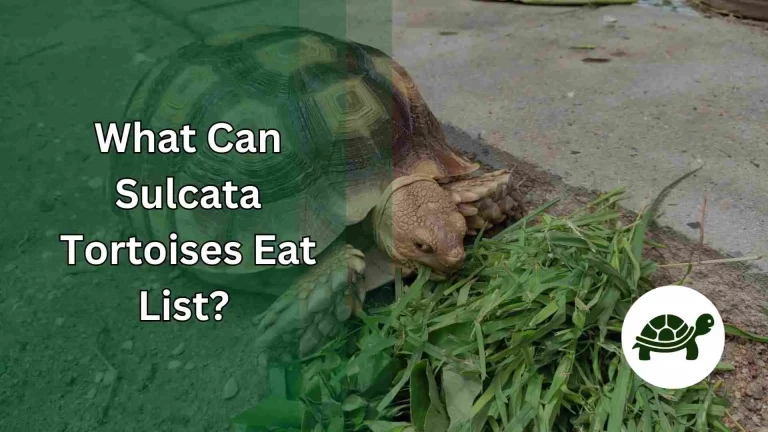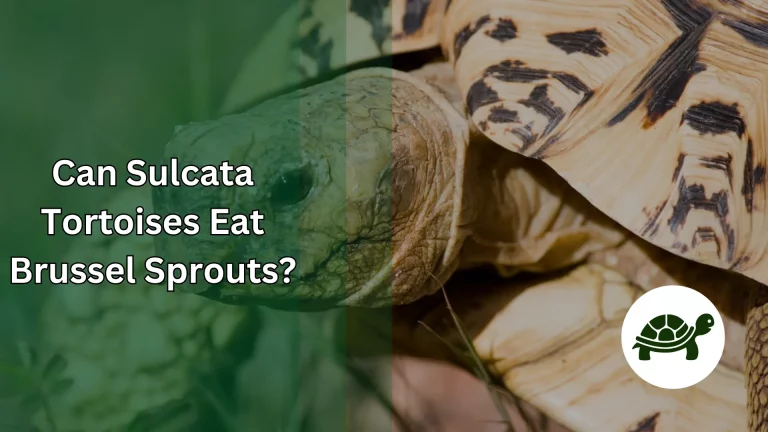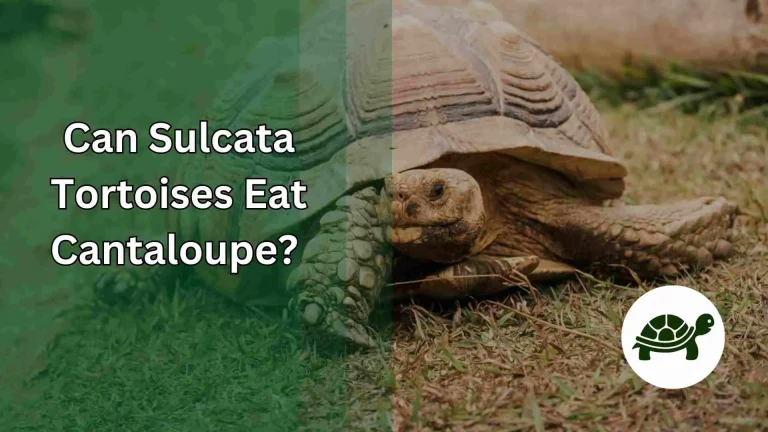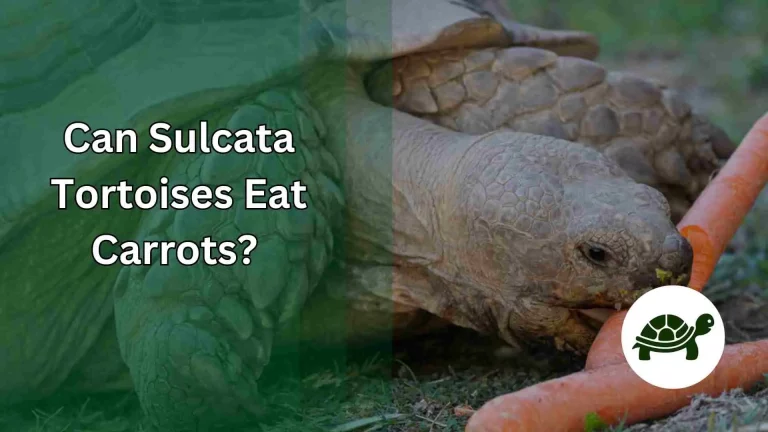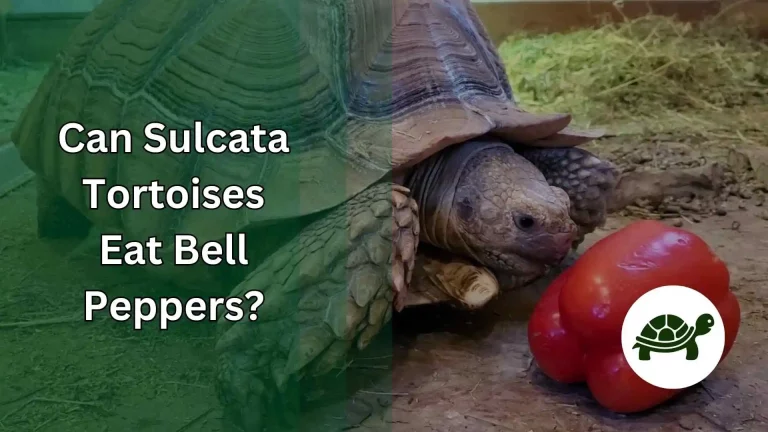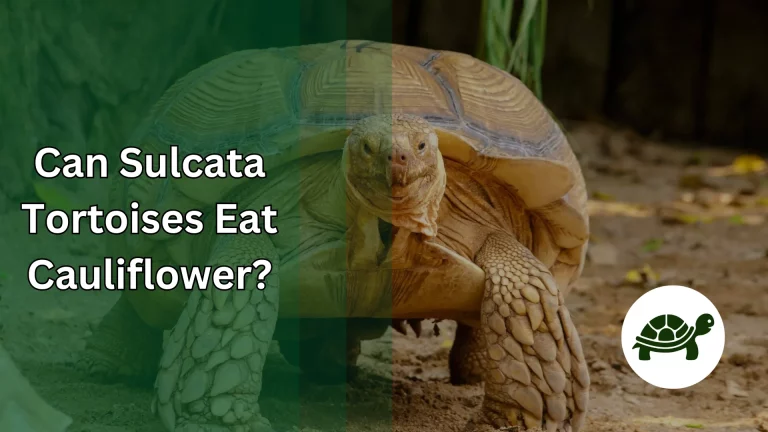Baby Sulcata Tortoise Care – All You Need To Know
The Sulcata Tortoise, also known as the African Spurred Tortoise, has captivated the hearts of reptile enthusiasts worldwide. These majestic creatures, renowned for their distinctive shells and gentle nature, make for fascinating pets. However, caring for a baby Sulcata Tortoise is a unique journey, filled with specific needs and responsibilities. It’s crucial for potential and new owners to understand the importance of providing the right environment, diet, and attention from the very beginning. This guide is your go-to resource, offering expert advice and practical tips to ensure your tiny shelled friend thrives.
Embarking on the adventure of raising a baby Sulcata Tortoise is both rewarding and challenging. These tortoises grow to be quite large and live for many years, making early care vital for their long-term health and happiness. In the following sections, we’ll dive into the essentials of baby Sulcata care, covering everything from creating a suitable habitat to understanding their dietary needs. So, let’s get started on this exciting journey of nurturing your baby Sulcata Tortoise!
Understanding Baby Sulcata Tortoises
Baby Sulcata Tortoises are a wonder of nature, known for their resilience and distinct personality. Originating from the arid regions of Africa, these tortoises are adapted to a life in a challenging environment. They’re among the largest species of tortoise in the world. As babies, they’re small and adorable, but don’t let their size fool you. They grow quickly and can reach a considerable size, requiring ample space and long-term commitment from their owners.
Recognizing their unique needs is key to their care. Baby Sulcatas have hard, bumpy shells, a characteristic feature of their kind. Their active nature and curious minds mean they require an environment that stimulates them both physically and mentally. Unlike other pets, Sulcata Tortoises can live for several decades, making owning one a lifelong commitment. This longevity is something every potential owner should consider.
In their early years, these tortoises show rapid growth. This growth phase is critical, and their care during this time shapes their overall health and development. Understanding their growth pattern helps in planning for their future – from the size of their enclosure to their diet. A baby Sulcata’s diet differs from that of an adult, needing more calcium and nutrients to support their growing bodies.
Embracing the care of a baby Sulcata Tortoise can be a fulfilling experience. It’s a journey filled with learning and love. As these little creatures grow, they become more than just pets; they become a part of the family. In the next sections, we’ll explore how to create the perfect habitat and diet for these amazing animals.
Creating the Perfect Habitat
Creating the right home for your baby Sulcata Tortoise is key to its happiness and health. These tortoises thrive in a specific environment that you can recreate at home. Let’s start with indoor housing. For baby Sulcatas, a large, sturdy enclosure is essential. They are active and need space to move. The enclosure should be warm, with a temperature between 75-100°F. Use a heat lamp to keep them cozy. Also, keep an eye on the humidity. It should be around 40-60%. This mimics their natural habitat.
Lighting is another crucial aspect. Sulcatas need UVB light to stay healthy. This light helps them make Vitamin D3, which is vital for their shell and bone health. Set up a UVB bulb in their enclosure. But remember, natural sunlight is the best. If possible, give your tortoise some safe, supervised time in the sun.
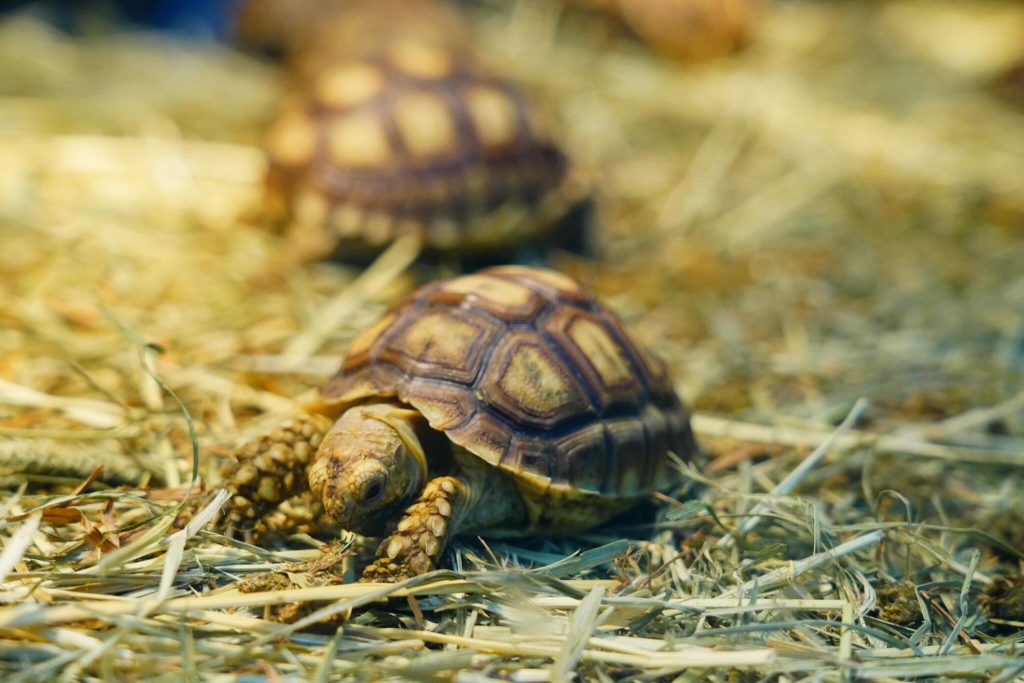
What about outdoor housing? If you live in a warm, dry area, an outdoor enclosure can be great, especially as they grow. Make sure it’s secure and predator-proof. The outdoor space should have a shaded area, too. Sulcatas love to bask in the sun, but they also need a cool spot to retreat to. Include a shelter for them to hide and feel safe.
In both indoor and outdoor settings, the ground matters. Use a substrate like coconut coir or cypress mulch. It’s soft for their feet and helps maintain the right humidity. Avoid using sand or gravel, as these can harm your tortoise. Also, add some rocks and plants to make the space more natural and interesting for them.
Diet and Nutrition
Feeding your baby Sulcata Tortoise the right food is crucial for its health. Their diet is unique and needs careful planning. Baby Sulcatas are herbivores. This means they eat only plants. Their diet should mainly consist of grasses and hay. These foods provide the fiber they need for a healthy digestive system. You can also give them leafy greens like dandelion, clover, and endive. But, mix things up to ensure they get all the necessary nutrients.
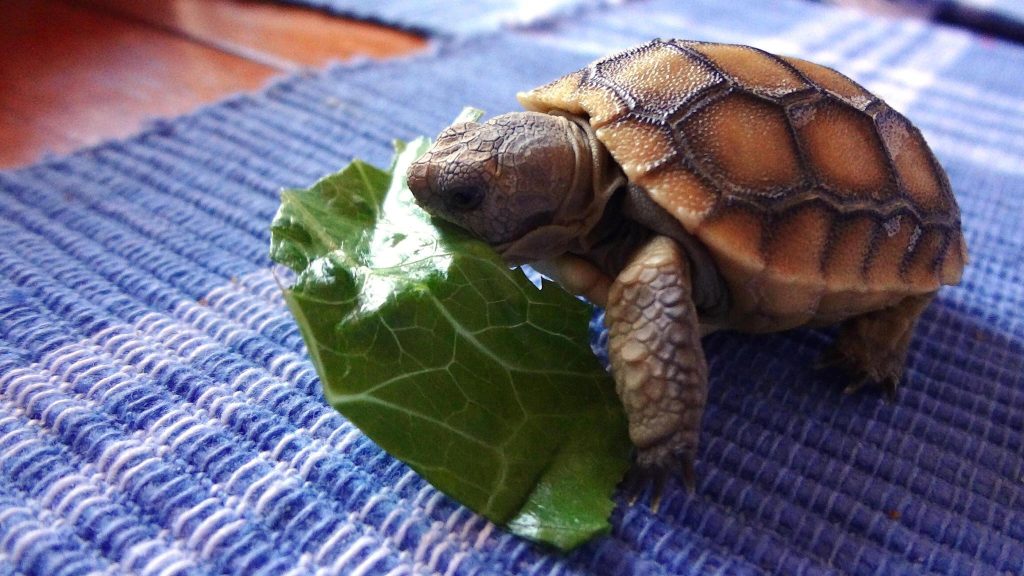
It’s important to know what not to feed them. Avoid giving your tortoise too much fruit. Fruits are high in sugar and can cause health issues. Also, stay away from foods high in oxalates like spinach. These can hinder their ability to absorb calcium. Calcium is vital for their shell and bone development. To help with this, you can sprinkle calcium powder on their food a couple of times a week.
Hydration is just as important as their diet. Even though Sulcatas are from dry areas, they still need water. Always have fresh water available in a shallow dish. They might also enjoy a shallow water bath once in a while. This helps them stay hydrated and clean.
Maintaining your sulcata’s health
Keeping your baby Sulcata Tortoise healthy requires attention and care. These tortoises can face some health issues, but with proper care, you can prevent most of them. One common problem is shell pyramiding. This happens when the shell grows unevenly. It’s often caused by poor diet or humidity. To avoid this, ensure your tortoise’s habitat has the right humidity and they are eating a balanced diet.
Respiratory infections are another concern. Symptoms include runny nose or difficulty breathing. These infections can happen if the habitat is too cold or damp. Keep the temperature and humidity at the right levels to prevent this. Also, watch out for signs of lethargy or loss of appetite. These could indicate a health problem.
Regular vet check-ups are essential. Find a vet who knows about tortoises. They can help monitor your tortoise’s growth and health. They’ll also offer advice on diet and care. Vaccinations aren’t needed for tortoises, but parasite control might be necessary.
Exercise is important too. Sulcatas are active and need space to move. This helps keep their muscles strong and their shells healthy. Encourage movement both inside and outside their enclosure.
Lastly, your tortoise’s mental health matters. They enjoy exploring and interacting with their environment. Add things like rocks or logs for them to climb over. This keeps them active and entertained.
Growth and Development
Watching your baby Sulcata Tortoise grow can be an amazing experience. These tortoises are known for their rapid growth rate, especially in their early years. Understanding this growth is important for their care. When they’re young, Sulcatas can grow about two to three inches per year. This rapid growth means you’ll need to adjust their habitat as they get bigger.
As your tortoise grows, its needs change. A larger space is crucial for their physical health. They need room to move, explore, and exercise. A small enclosure can hinder their growth and cause stress. It’s like giving a growing child a small room to live in.
Diet changes are part of their growth too. Young Sulcatas need more calcium for their developing shells. As they grow older, their calcium needs decrease, but they still need a balanced diet. Keep an eye on their eating habits. If you notice changes, it might be time to adjust their diet.
Regular weight checks are a good idea. They help you track their growth. If your tortoise is gaining too much or too little weight, you might need to change their diet or habitat. Remember, each tortoise grows at its own pace. What’s important is that they are healthy and active.
Growth and development in Sulcatas are not just physical. They develop their personalities as they age. You’ll notice changes in their behavior. Some might become more active, while others might be calmer. Interacting with them regularly helps you understand these changes.
Daily Care and Maintenance
Caring for your baby Sulcata Tortoise daily is key to its well being. These little creatures depend on you to keep their environment clean and safe. First, let’s talk about their home. Clean the enclosure regularly. Remove waste daily to prevent bacteria and odor. Change the water in their dish every day too. It keeps them hydrated with fresh, clean water.
Check the temperature and humidity often. Use a thermometer and humidity gauge. Sulcatas need a warm environment. If it’s too cold, they can get sick. If it’s too hot, they can get stressed. The same goes for humidity. Too dry or too wet isn’t good for them.
Handling your tortoise is part of daily care. But, do it gently. Wash your hands before and after to prevent germs. Handling helps you bond with your tortoise. It also makes health checks easier. Look for signs of good health, like clear eyes and a smooth shell.
Exercise is important. Let your tortoise roam in a safe area, under your watch. This helps them stay fit and happy. They love exploring. It’s good for their physical and mental health. Make sure the roaming area is free from dangers like deep water or toxic plants.
Lastly, keep an eye on their eating. Baby Sulcatas eat once or twice a day. Make sure they’re eating enough, but not too much. A healthy diet keeps them strong. Watch for any changes in their eating habits. This could signal a health issue.
Tips for First-Time Owners
Owning a baby Sulcata Tortoise for the first time is exciting, but it comes with challenges. Here are some tips to help you start off right. First, do your research. Sulcatas are unique pets with specific needs. Understand what they require in terms of habitat, diet, and care. Knowledge is key to keeping your tortoise healthy.
Space is crucial. These tortoises grow big and fast. Plan ahead for a larger habitat as they grow. It saves you from scrambling to adjust their space later. Think long-term when choosing your tortoise’s home.
Patience is important. Sulcatas take time to adjust to new environments. Give them time to get comfortable with you and their new home. Be gentle and consistent in your interactions. This builds trust and a strong bond.
Be prepared for the commitment. Sulcatas live for many years. Owning one is a long-term responsibility. Make sure you’re ready for this commitment before bringing one home.
Frequently Asked Questions (FAQs)
1. How often should I feed my baby Sulcata Tortoise?
Baby Sulcata Tortoises should be fed once or twice daily. Their diet should mainly consist of grasses and leafy greens. It’s important to ensure they’re not overfed to avoid health issues like shell pyramiding. Monitor their growth and adjust the portions as they get older.
2. What temperature should I maintain in my Sulcata’s enclosure?
The ideal temperature range for a baby Sulcata’s enclosure is between 75°F and 100°F. Use a heat lamp to maintain this temperature. At night, the temperature can drop a bit but should not go below 70°F. Regularly check the temperature with a reliable thermometer to ensure a suitable and consistent environment.
3. How big should the enclosure be for a baby Sulcata Tortoise?
Even though they are small initially, Sulcata Tortoises grow quickly. Start with an enclosure that’s at least 36 inches long and 24 inches wide. As they grow, they’ll need more space, so plan for a larger enclosure or outdoor area. Remember, a spacious environment is crucial for their physical and mental well-being.
4. How do I know if my Sulcata Tortoise is healthy?
A healthy baby Sulcata should have clear, bright eyes and a smooth, well-formed shell. They should be active, show an interest in their surroundings, and have a good appetite. Regular bowel movements and a steady growth rate are also signs of good health. If you notice any changes in these behaviors, consult a veterinarian.
5. Can Sulcata Tortoises be kept with other pets?
While Sulcata Tortoises can coexist with other pets, caution is advised. They should never be left unsupervised with other animals, especially dogs or cats, to prevent any accidental harm. Also, ensure that other pets do not have access to the tortoise’s food and water to prevent contamination.
Conclusion
In summary, caring for a baby Sulcata Tortoise is a fulfilling journey that requires dedication, patience, and proper knowledge. From setting up the perfect habitat to providing a balanced diet and ensuring regular health check-ups, each step is crucial in nurturing these fascinating creatures. Remember, the effort you put into their care directly impacts their health, happiness, and longevity. By following the guidelines and tips provided in this guide, you’re well on your way to becoming an exemplary Sulcata Tortoise caretaker. Embrace this journey with enthusiasm, and watch as your tiny companion grows into a majestic, lifelong friend.
Our journey through the world of baby Sulcata Tortoise care highlights the importance of responsible pet ownership. Whether you’re a first-time owner or an experienced enthusiast, continuous learning and adaptation are key to providing the best care. We hope this guide has equipped you with the knowledge and confidence to create a nurturing environment for your Sulcata. Remember, each day with your tortoise brings new experiences and joys, making the commitment all the more rewarding. Here’s to the wonderful journey ahead with your Sulcata Tortoise!


